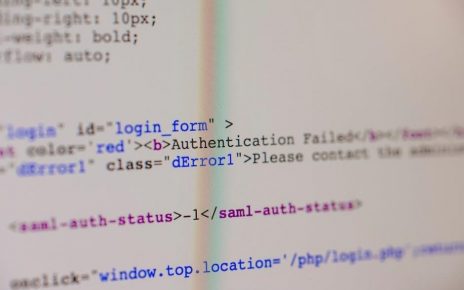NCAA Division I Manual: A Comprehensive Guide
The NCAA Division I Manual serves as the definitive guide for all member institutions. It outlines the rules and regulations governing student-athletes. It covers eligibility‚ recruitment‚ and competition. This ensures fair play and academic integrity across college sports programs nationwide.
Overview of the NCAA Division I Manual
The NCAA Division I Manual is a comprehensive document. It delineates the operational framework for Division I athletics. It provides detailed guidelines for member institutions‚ student-athletes‚ and athletics personnel. The manual addresses various aspects of collegiate sports. These include eligibility criteria‚ recruiting protocols‚ and playing season regulations. Furthermore‚ it covers the conduct of athletics staff and compliance procedures.
The manual aims to ensure fair competition and uphold academic standards within Division I. It is regularly updated to reflect changes in the collegiate sports landscape. The NCAA Legislative Services Database (LSDBi) provides access to the manual‚ including past versions and recent amendments.
Recent changes include updates to transfer eligibility rules and Name‚ Image‚ and Likeness (NIL) regulations. These adjustments reflect the evolving nature of college athletics and the need to adapt to contemporary issues. The manual is an essential resource for navigating the complexities of NCAA Division I governance and maintaining compliance.

Key Areas Covered in the Manual
The NCAA Division I Manual encompasses crucial domains. These include student-athlete eligibility‚ recruiting regulations outlined in Bylaw 13‚ playing and practice seasons per Bylaw 17‚ and the conduct of athletics personnel as detailed in NCAA Bylaw 11.
Eligibility of Student-Athletes
The NCAA Division I Manual dedicates significant attention to student-athlete eligibility. This section meticulously outlines the academic standards required for initial eligibility. It ensures that athletes are students first. It details the rules regarding satisfactory academic progress. This is crucial for maintaining eligibility throughout their collegiate careers. Bylaw 12.1.2 states they can not be paid to compete.
It addresses amateurism. The rules clearly define what constitutes permissible and impermissible activities. It protects the integrity of college sports. The manual also provides guidance on eligibility waivers. These waivers address unique circumstances that may impact a student-athlete’s ability to meet standard eligibility requirements.
Transfer eligibility is another key component. It outlines the conditions under which athletes can transfer between institutions and compete immediately. The NCAA approved changes on April 22‚ 2024‚ that impact transfer eligibility rules.
This section is a vital resource for student-athletes. It ensures compliance and provides a framework for fair competition. It also assists athletic departments in navigating complex eligibility matters.
Recruiting Regulations (Bylaw 13)
Bylaw 13 of the NCAA Division I Manual focuses on recruiting regulations. It governs how college coaches can interact with prospective student-athletes. This section aims to maintain fairness and prevent undue influence in the recruitment process. It establishes permissible communication methods. This includes phone calls‚ emails‚ and in-person visits.
The bylaw sets specific time periods for recruiting activities. It dictates when coaches can contact recruits. For most sports‚ coaches can begin reaching out to athletes starting June 15 after sophomore year or September 1 of their junior year of high school. It also covers official and unofficial visits. It outlines the expenses that institutions can cover during these visits.
Bylaw 13 addresses recruiting materials that institutions can provide. It sets limits on the content and format of these materials. It regulates the involvement of boosters in the recruiting process. It prevents them from engaging in activities that could give an unfair advantage.
This section ensures a level playing field in recruiting. It protects prospective student-athletes from pressure and exploitation. It promotes ethical conduct among coaches and institutions.
Playing and Practice Seasons (Bylaw 17)

Bylaw 17 of the NCAA Division I Manual details the regulations governing playing and practice seasons. It ensures that student-athletes have adequate time for academics and rest. It prevents excessive demands on their time and energy. This section defines the length of the playing season for each sport. It sets limits on the number of contests and dates of competition.
The bylaw specifies the permissible number of practice hours per week. It distinguishes between in-season and out-of-season practice regulations. It regulates activities like strength and conditioning. It includes film review‚ and team meetings. It mandates a certain number of days off per week for student-athletes.
Bylaw 17 addresses regulations for summer activities. It restricts mandatory workouts during the summer months. It allows for voluntary training under certain conditions. It outlines rules for preseason practice periods. It specifies when teams can begin official practices before the start of the season.
This section aims to protect the well-being of student-athletes. It balances athletic competition with academic responsibilities. It promotes a healthy lifestyle and prevents burnout.
Conduct of Athletics Personnel (NCAA Bylaw 11)
NCAA Bylaw 11 focuses on the conduct of athletics personnel. It establishes standards for ethical behavior and professional responsibility. It applies to coaches‚ administrators‚ and staff members within athletic departments. It emphasizes the importance of integrity and fair play. This bylaw outlines specific expectations for individuals involved in intercollegiate athletics.
It prohibits activities that could compromise the integrity of the NCAA. It includes gambling on sports‚ providing improper benefits to student-athletes‚ and engaging in unethical recruiting practices. Bylaw 11 requires athletics personnel to report any violations of NCAA rules. It stresses the importance of compliance with all regulations.
The bylaw addresses conflicts of interest. It prevents individuals from using their positions for personal gain. It promotes transparency in financial matters. It mandates adherence to the principles of institutional control. It expects institutions to monitor their athletic programs and ensure compliance.
Bylaw 11 is crucial for maintaining the integrity of college sports. It promotes ethical behavior among athletics personnel. It ensures fair competition and protects the well-being of student-athletes.

Recent Changes and Updates
The NCAA Division I Manual undergoes continuous revisions. These changes reflect evolving landscape college athletics. Recent updates address transfer eligibility. They also cover Name‚ Image‚ and Likeness (NIL) policies. These adjustments aim to modernize regulations and address emerging issues within intercollegiate sports.
Transfer Eligibility Rule Changes (April 2024)
In April 2024‚ the NCAA approved significant changes to Division I transfer eligibility rules. These changes have a immediate effect. The modifications primarily address the requirements for student-athletes who wish to transfer institutions and compete immediately. Previously‚ student-athletes generally had to sit out one academic year before being eligible to compete at their new school unless they met specific exception criteria.
The rule changes aim to create a more standardized and transparent process. This also reduces the need for waivers. The NCAA is striving to balance student-athlete opportunity with maintaining competitive equity. Key aspects of the updated transfer policy include adjustments to the “one-time transfer exception.” This allows student-athletes to transfer once without penalty‚ provided they meet certain academic requirements and notify their previous institution within specified timeframes.
Additionally‚ the changes impact the review process for transfer waivers. It aims to ensure consistent application of the rules across all Division I institutions. These updates reflect the NCAA’s ongoing efforts to adapt its regulations. This recognizes the evolving needs and expectations of student-athletes in the modern collegiate sports environment.
Name‚ Image‚ and Likeness (NIL) Rule Changes (April 2024)
Alongside transfer eligibility‚ the NCAA also approved changes regarding Name‚ Image‚ and Likeness (NIL) in April 2024. These revisions address the evolving landscape of NIL activities for Division I student-athletes. The changes aim to provide more clarity. It also establishes a more standardized framework for NIL agreements. This ensures compliance with NCAA guidelines.
The updated rules focus on key aspects. They include disclosure requirements‚ permissible activities‚ and institutional involvement. Student-athletes are now required to disclose their NIL deals to their respective institutions. This promotes transparency and helps prevent conflicts of interest. The NCAA has also clarified what activities are considered permissible under NIL rules.
These include endorsements‚ sponsorships‚ and personal appearances. Institutions must adhere to specific guidelines regarding their involvement in NIL activities. They cannot directly compensate student-athletes for their NIL rights; These adjustments reflect the NCAA’s commitment to adapting to the changing environment. They also balance commercial opportunities for student-athletes with maintaining the integrity of college sports. The goal is to provide a sustainable and equitable NIL framework.

Accessing the NCAA Division I Manual
The NCAA Division I Manual is accessible through multiple avenues. This includes downloading the PDF version for offline use. Also‚ the NCAA Legislative Services Database (LSDBi) offers a searchable online platform. This provides convenient access to the manual’s contents.
Downloading the PDF Version
The NCAA Division I Manual is readily available for download in PDF format. This allows users to have a complete‚ offline copy of the regulations. This is particularly useful for coaches‚ administrators‚ and student-athletes who need quick access to the rules without relying on an internet connection. The PDF version mirrors the official manual. It includes all bylaws‚ interpretations‚ and official commentary.
Downloading the PDF ensures that users have the most current version of the manual at their fingertips. It is advisable to regularly check the NCAA website for updates and revisions. The NCAA frequently updates its rules and regulations. This ensures ongoing compliance with the latest guidelines. The PDF is easily searchable. It allows users to quickly find specific bylaws or topics of interest.
Having a digital copy also allows for highlighting and annotation. This can facilitate a deeper understanding of the material. Furthermore‚ the PDF version is easily shared with team members and staff. This promotes consistent understanding of the NCAA regulations. It helps to maintain compliance within athletic programs.
Using the NCAA Legislative Services Database (LSDBi)
The NCAA Legislative Services Database‚ known as LSDBi‚ provides a robust online platform. It offers access to the Division I Manual and related legislative resources. LSDBi allows users to search for specific bylaws‚ interpretations‚ and case studies. This helps in understanding and applying NCAA rules. The database is regularly updated with amendments. This ensures users have the most current information.
LSDBi offers advanced search functionalities. It enables filtering by topic‚ keyword‚ or legislative cite. This makes it easier to locate specific information within the vast array of NCAA regulations. The platform also provides access to legislative proposals. This allows users to track the evolution of NCAA rules and regulations.
Users can generate reports and summaries of specific legislative areas. This is helpful for compliance officers and administrators. They need to stay informed about changes affecting their institutions. LSDBi is an invaluable tool for navigating the complexities of NCAA legislation. It promotes informed decision-making and ensures adherence to NCAA standards.



